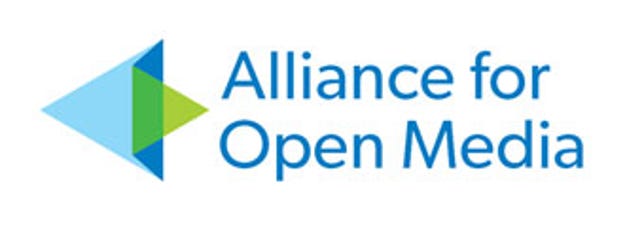
Some of the tech industry’s largest companies — Cisco, Microsoft, Google, Intel, Mozilla, Amazon and Netflix — have banded together to boost the quality of online video.
The new Alliance for Open Media seeks to create new video compression technology by 2016 or 2017 designed to make better use of the networks that deliver video to smartphones, computers, streaming-media devices, video game consoles and TVs.
You may not care about abstruse matters like compression efficiency, but you probably do care about what it can deliver: videos that download faster and look better. Compression improvements pave the way for higher-resolution video, which offers more detail, a better range of colors and bright-to-dark contrast, and an improved ability to capture sports or video game action by showing more video frames per second.
Improving video compression is a ceaseless activity, but what’s different this time is the motive behind the alliance — the desire to sidestep a patent-licensing minefield that afflicted what for years looked like the best next-generation video compression technology — and the range of players involved. The fact that this time Microsoft is on the same side as Google and Mozilla, maker of the Firefox browser, means the technology has a greater chance of succeeding.


Movies aren’t on film much any more. New generations of video technology are looking to deliver an ever better experience.
CNET
The alliance’s goal is to “make sure the pace of innovation in video compression keeps pace with all video experiences that are being built,” said Matt Frost, head of partnerships for Google’s Chrome Media team. To support today’s streaming-media and videoconferencing services and whatever comes tomorrow, like spherical video adapted to virtual-reality headsets, video standards must adapt faster than the current 10-year cycle, he said.
A few years ago, video was delivered mostly over cable TV networks, broadcast antennas or with optical discs like DVDs and Blu-rays. Now Internet-based streaming video services like Netflix, YouTube, Hulu, Amazon Prime and HBO Now have become giants of video distribution.
“Streaming video is where we’re all headed,” said Ian LeGrow, manager of the Windows partner group at Microsoft.
Powerful rival
The alliance is going up against a powerful force, a group called MPEG (Moving Picture Experts Group) whose members — from the telecommunications, consumer electronics and cable TV industries — have produced many widely used compression standards. Over the last decade, one standard called H.264 grew to dominate video distribution. Everything from browsers to mobile phone processors had to support it, and anyone from video camera manufacturers to browser makers had a single obvious choice about the best way to deliver video.
H.264’s successor, called HEVC or H.265, improved video quality by roughly a factor of two and looked to be H.264’s heir apparent — a single standard that would handle almost all video. But patent licensing fees and uncertainty have hampered HEVC/H.265.
Those wanting to use previous MPEG standards have been able to license the necessary pool of patents from one organization, MPEG LA, but more than two years after the HEVC/H.265 standard was finished, licensing terms still aren’t clear as other groups jockey for patent licensing royalties. That’s opened the door to alternatives like Google’s VP9 and VP10, Mozilla’s Daala and Cisco’s Thor.
Alone, each of those compression technologies could be useful in one area or another, but together, they have a better chance at attracting broad industry support. Microsoft and Intel each have lots of experience in creating video compression technologies, too, and Netflix is a king of video streaming that reaches not just smartphones and PCs but also consumer electronics devices like set-top boxes, TVs and video recorders. Amazon, too, is a major player in streaming video services with its Amazon Prime service.
When MPEG LA announced its HEVC/H.264 licensing terms, it charged no royalties for streaming-media use. But in July, a second patent licensing group called HEVC Advance arrived with a demand for 0.5 percent of all streaming-media revenue delivered with HEVC/H.265. Some companies, including Sony, Panasonic, Sharp, Toshiba and LG Electronics, don’t offer patents through either MPEG LA or HEVC Advance yet, and Frost & Sullivan analyst Dan Rayburn said a third HEVC/H.265 patent licensing pool is on the way.
The way MPEG and other standards groups often work — creating a specification, then determining what patents are essential to support it and deciding patent licensing terms — makes it slower to adopt those standards, Microsoft’s LeGrow said. “For a big company, there is uncertainty about the cost of supporting a technology,” he said.
Thus, the new alliance adopted the approach Mozilla and Google prefer — an open-source, royalty-free technology. “That’s the easiest way to settle uncertainty around licensing,” he said.
Still uncertainties
There are plenty of unknowns for the new video technology — called a codec, short for coder-decoder.
The technology will draw from the considerable skills of all the organizations so far committed, and they have lots of clout when the time comes to adopt it. Google has the YouTube video service, Chrome Web browser and Android operating system that powers phones and tablets; Microsoft has the Windows operating system for PCs, tablets and phones, the Internet Explorer and Edge browsers, and the Xbox video game console; Mozilla has the Firefox browser and Firefox OS operating system for smartphones. Chipmaker Intel can make sure the video performs better and doesn’t drain phone or laptop batteries by building support into its processors.
But that still leaves plenty of holes. Apple is another powerful player when it comes to browsers and to the mobile processors that power its iPhone and iPad devices. Facebook’s video efforts are ramping up fast, too. And Qualcomm is a major manufacturer of mobile chips.
More partners are expected to join the alliance, although Frost and LeGrow wouldn’t say who.
The alliance isn’t an official standards body. It’s possible, though, that the fruits of its labor could be contributed to one. Cisco and Mozilla are working with one such effort, the NetVC project at the Internet Engineering Task Force.
Even with some powerful tech players conspicuously missing, the alliance at least on paper looks more significant than any other challenger yet to H.264 and HEVC/H.265. YouTube delivered more than 25 billion hours of VP9 video in 2014, but Google’s VP9 video compression technology didn’t spread far beyond Chrome and Firefox; Microsoft in particular gave it the cold shoulder. Cisco wanted royalty-free video for its WebEx and Spark videoconferencing products, but didn’t like the idea of using a technology controlled just by Google. Mozilla’s mission of encouraging openness and choice on the Internet made it difficult to support patent-encumbered H.264, but it would have been tough to build broad support for Daala. Collectively, the allies may be able to achieve what they couldn’t separately.
“It is a pretty stellar group of companies together,” Frost said.




